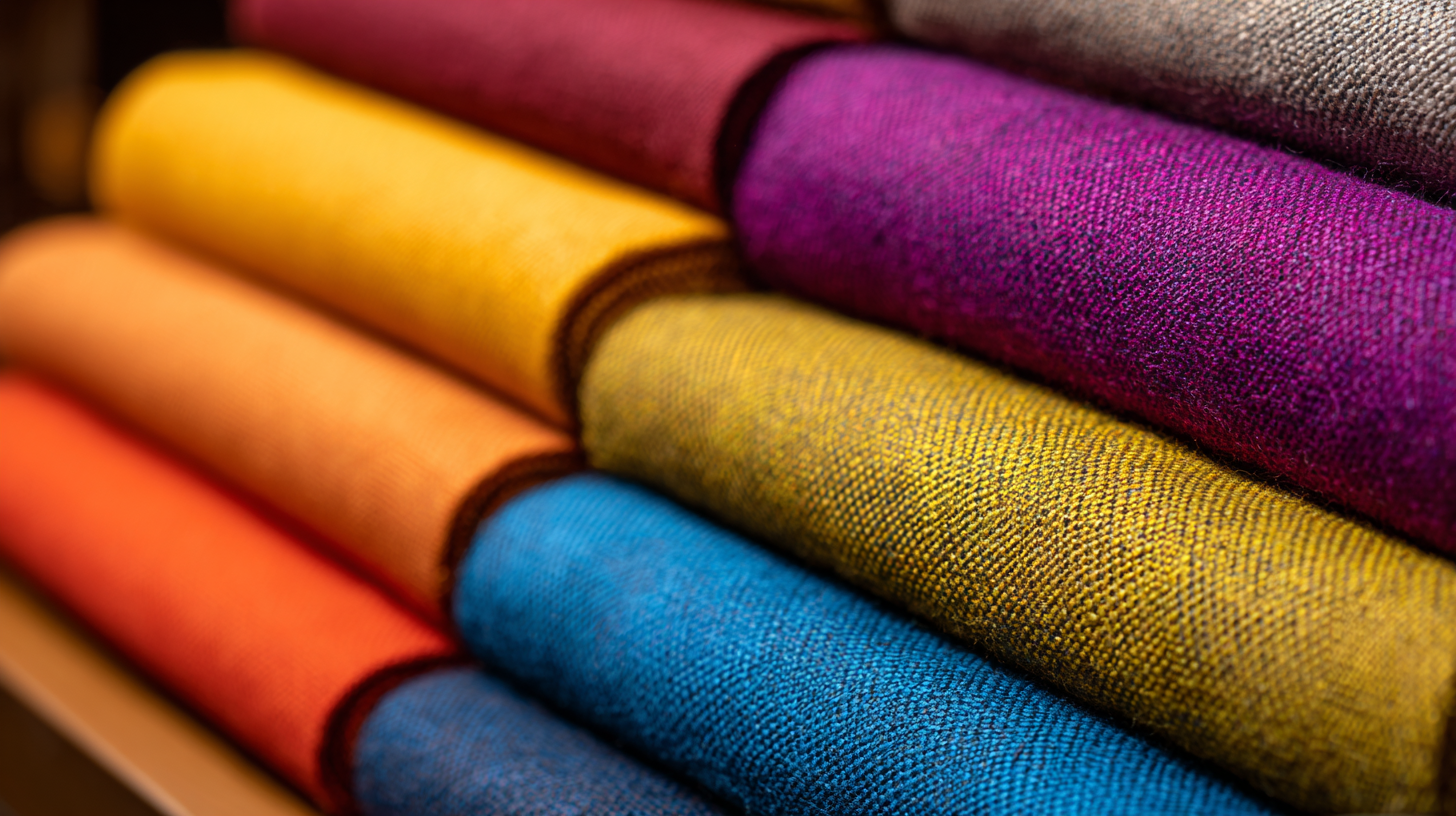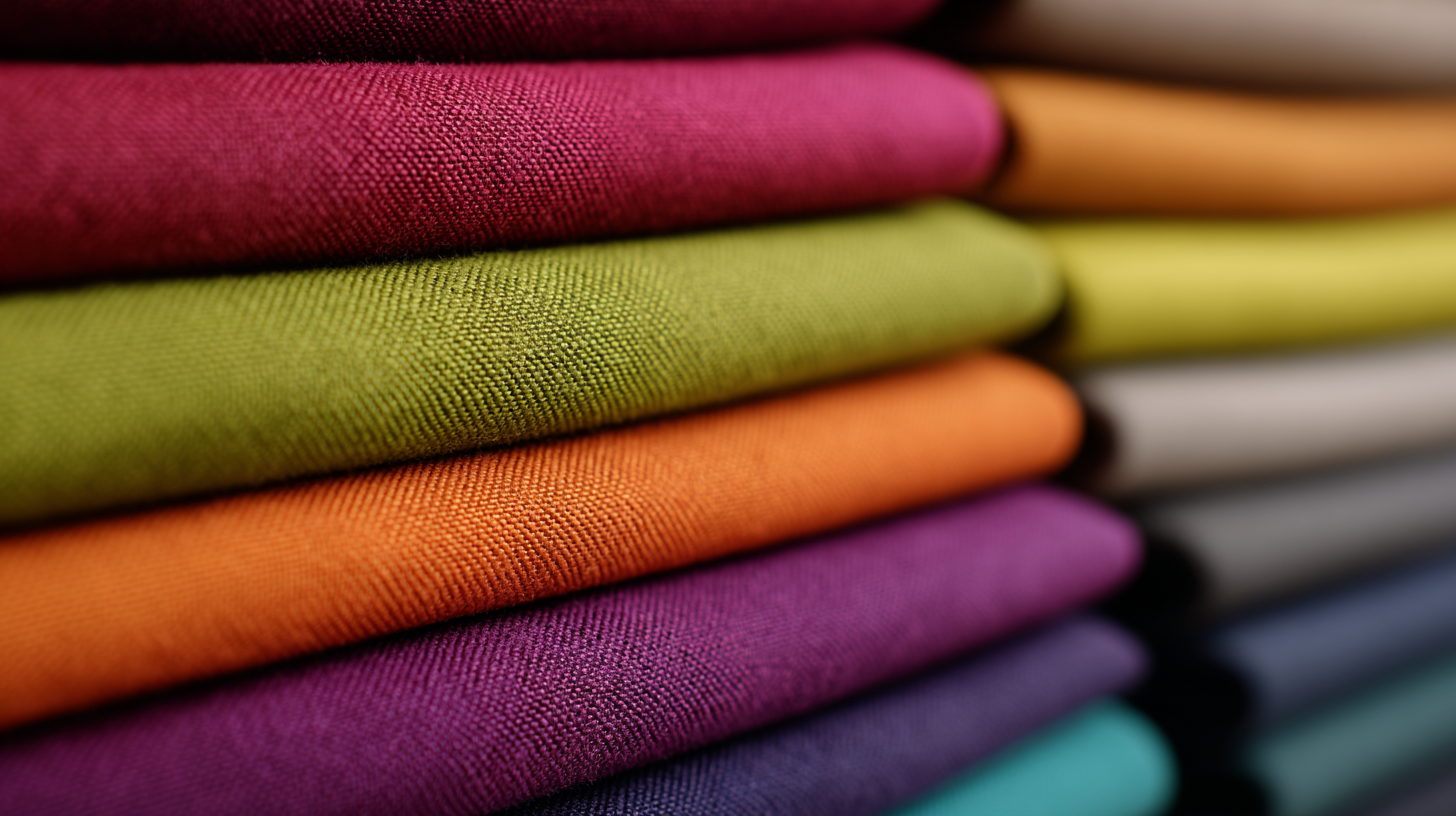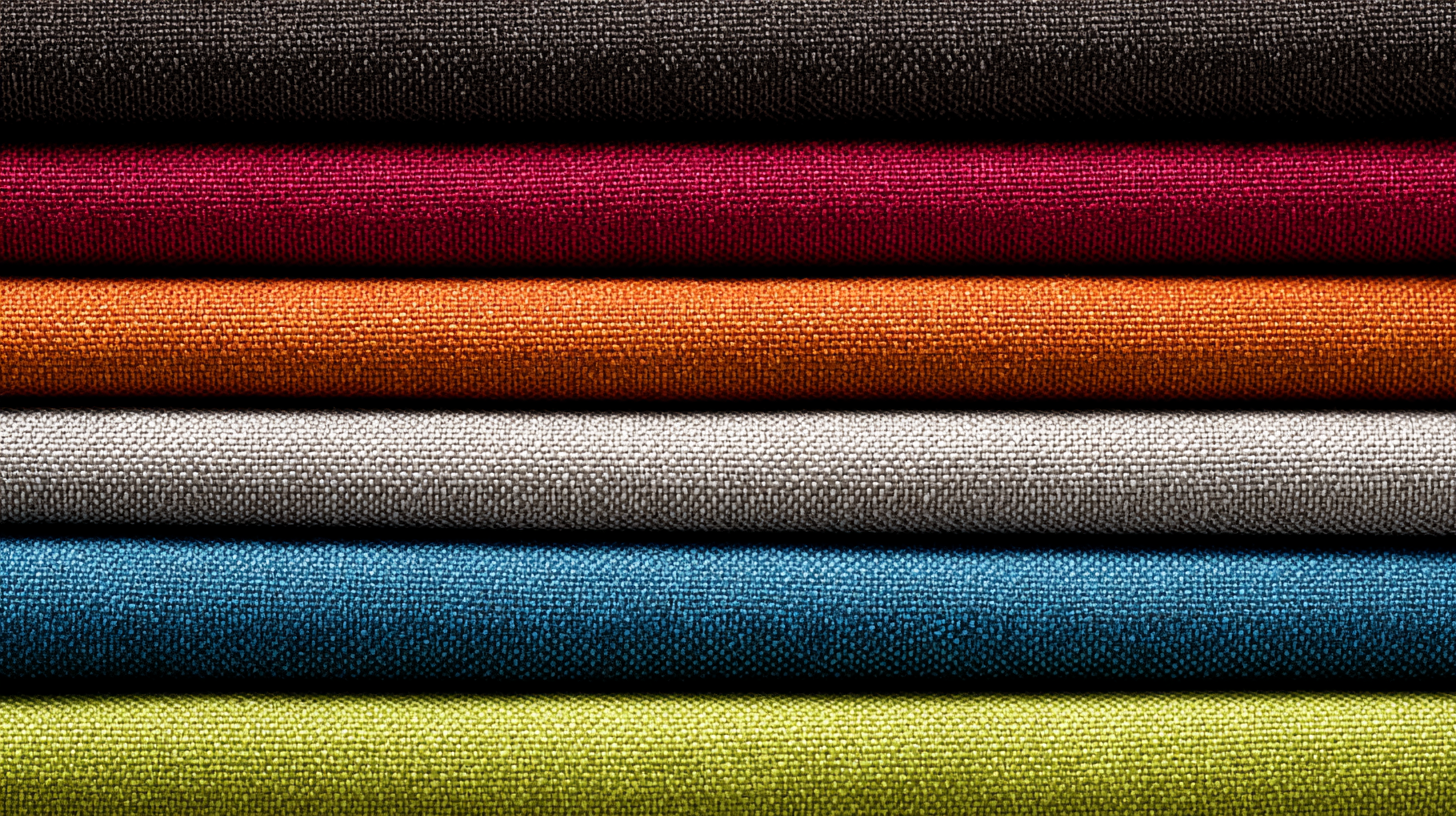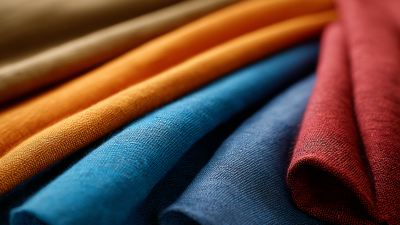Choosing the right Polyester Dyed Fabric for your projects is crucial for achieving the desired aesthetic and functionality. According to the Global Textile Market Report 2022, synthetic fibers, particularly polyester, accounted for over 50% of the total textile production, highlighting their dominance in the industry. The report emphasizes that polyester dyed fabrics are favored for their durability, color retention, and resistance to wrinkles, making them an ideal choice for various applications ranging from fashion apparel to home furnishings.
 As consumer demand for sustainable and high-quality textiles continues to rise, understanding the nuances of selecting the appropriate polyester dyed fabric is essential for designers and manufacturers alike. This article presents seven essential tips to guide you in making informed choices that align with your project requirements and market trends.
As consumer demand for sustainable and high-quality textiles continues to rise, understanding the nuances of selecting the appropriate polyester dyed fabric is essential for designers and manufacturers alike. This article presents seven essential tips to guide you in making informed choices that align with your project requirements and market trends.
When it comes to selecting the right polyester dyed fabric, understanding the various dye techniques is essential for achieving the desired results in your projects. Polyester fabrics can be dyed using methods such as disperse dyeing, solution dyeing, and pigment dyeing, each of which offers distinct advantages depending on the application. According to the Textile World magazine, disperse dyeing is the most common technique for polyester, utilizing heat to bond the dye to the fabric, which results in vibrant colors that are resistant to fading and washing. This method is particularly effective for creating detailed designs and prints, making it a favorite in the fashion industry.
On the other hand, solution dyeing involves adding color to the polymer before it is extruded into fiber, providing exceptional color fastness and environmental benefits, as noted in the report by the American Association of Textile Chemists and Colorists. This technique is often preferred for outdoor fabrics, where durability against sunlight and moisture is critical. Additionally, pigment dyeing, while less common for polyester, offers a quick process and a wide color range, albeit with less durability compared to disperse dyeing. Understanding these techniques allows designers and manufacturers to make informed choices that align with their project goals, ensuring that the final product meets both aesthetic and functional requirements.
When selecting polyester dyed fabric for your projects, evaluating fabric quality is paramount. One of the key characteristics to consider is the thread count, which directly impacts the fabric's durability and texture. A higher thread count usually indicates a denser and more resilient fabric, suitable for applications that experience frequent use or require additional strength. Additionally, examining the fabric's weave can offer insights into its overall performance; tighter weaves often provide better resistance to wear and maintain their shape over time.
Another crucial factor is colorfastness, which determines how well the dye is set within the fibers. Fabrics that exhibit high colorfastness will retain their vibrancy even after multiple washes, making them ideal for clothing or home textiles that undergo regular cleaning. Lastly, consider the weight of the fabric, as different weights serve various purposes. Lighter fabrics may be perfect for summer garments, while heavier options are better suited for outerwear. By focusing on these essential characteristics, you can make informed decisions to ensure your projects turn out beautifully and stand the test of time.
| Characteristic | Description | Importance Level |
|---|---|---|
| Colorfastness | Resistance of the fabric to fading and bleeding of colors. | High |
| Texture | The feel of the fabric; smooth vs. textured. | Medium |
| Weight | The thickness of the fabric, affecting drape and durability. | High |
| Stretchability | The amount a fabric can stretch without damage. | Medium |
| Breathability | How well air can pass through the fabric. | Medium |
| Finish | The treatment of the fabric surface for aesthetic or functional purposes. | Medium |
| Environmental Impact | The sustainability of the fabric manufacturing process. | High |
When embarking on a project that involves polyester dyed fabric, selecting the right color palette is crucial for achieving the desired aesthetic and functionality. According to a report from the Pantone Color Institute, colors can influence perceptions and emotions, making it essential to consider how the chosen hues connect with your brand or intended message.
 For instance, vibrant colors can evoke feelings of energy and optimism, while muted tones often convey sophistication and calmness. It’s important to analyze how these colors align with the purpose of your project to ensure a cohesive and impactful outcome.
For instance, vibrant colors can evoke feelings of energy and optimism, while muted tones often convey sophistication and calmness. It’s important to analyze how these colors align with the purpose of your project to ensure a cohesive and impactful outcome.
Additionally, the textile industry reports that color trends fluctuate based on cultural and societal shifts. The 2023 Global Color Trends Report indicates that sustainable choices, including eco-friendly dyes and natural shades, have gained prominence. As consumers increasingly prioritize sustainability, opting for fabrics with earth tones or shades inspired by nature can resonate well with your audience.
When selecting colors, it's advisable to create mood boards to visualize how different shades interact, ensuring that the finished product not only meets aesthetic goals but also aligns with broader industry trends and consumer expectations.
When selecting polyester dyed fabric for your projects, understanding fabric weight and texture is crucial for achieving the desired outcome. Fabric weight, measured in grams per square meter (GSM), significantly affects how the material drapes and performs. According to a report by the Textile World, fabrics weighing between 150-300 GSM are ideal for versatile applications such as apparel, while those above 300 GSM are better suited for outerwear and upholstery due to their durability and structure.

Texture, which can range from smooth to textured finishes, also plays a key role in the fabric's functionality and visual appeal. For instance, a soft, brushed polyester offers a luxurious feel and is perfect for clothing intended for comfort, while a more rigid, crisp texture is ideal for structured garments and fashion designs. When choosing your fabric, consider the end use; a lightweight, smooth polyester might be suitable for activewear, whereas a heavier, textured option could enhance the sophistication of evening wear.
Tip 1: Always check the GSM of polyester fabrics before purchasing to ensure they meet the requirements of your project. Tip 2: Conduct a tactile test by feeling the fabric to assess the texture and suitability for your design, ensuring it aligns with your vision and comfort needs.
When assessing the environmental impact and sustainability of polyester fabrics, it’s crucial to consider the production processes involved. Conventional polyester manufacturing often relies on petrochemicals, which not only contribute to environmental degradation but also pose a significant carbon footprint. Opting for recycled polyester, made from post-consumer plastics, can offer a more eco-friendly alternative. This not only helps reduce waste but also lowers the need for virgin materials, making it a sustainable choice for your projects.
Another important tip when choosing polyester dyed fabrics is to look for certifications that indicate environmentally responsible practices. Many manufacturers now provide information on their sustainability initiatives, such as using water-based dyes and reducing energy consumption during production. Checking labels for certifications like OEKO-TEX® or Global Recycle Standard can guide you in making informed decisions. Additionally, consider the durability and lifecycle of the fabric, as longer-lasting materials reduce the frequency of replacement, ultimately leading to less environmental impact over time. By prioritizing sustainable choices, you contribute to a better future while selecting the right material for your projects.






